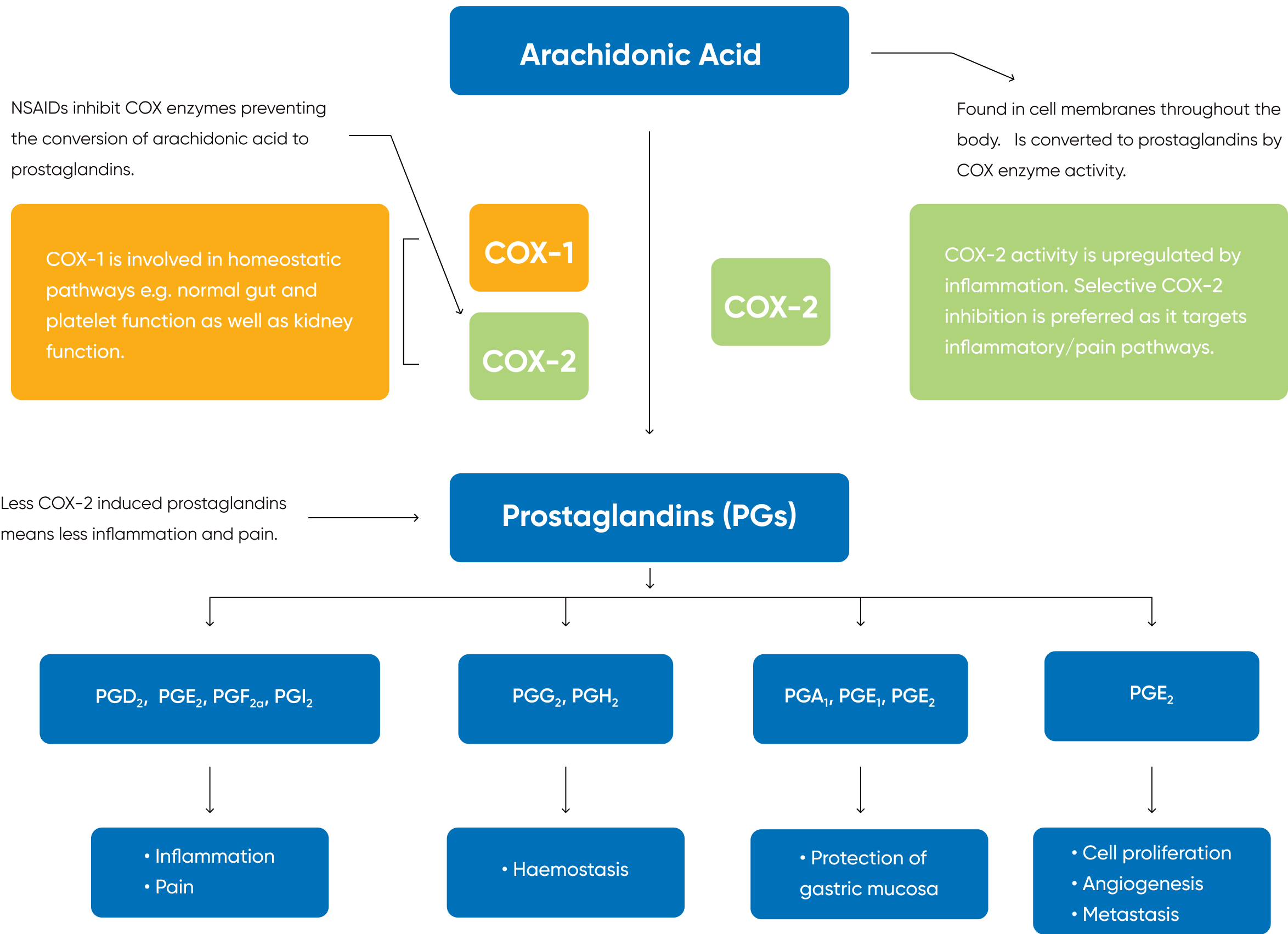
How Does Meloxicam Work?
Many body functions rely on hormone signaling molecules called prostaglandins. Inflammation and pain is felt in the body as a result of the activity of specific types of prostaglandins. Prostaglandins associated with inflammation are made at the site of tissue damage.
Meloxicam inhibits the enzyme responsible for the production of these inflammatory prostaglandins. Less prostaglandin production means less pain and inflammation.

The Inflammation Pathway
The first step in prostaglandin production is carried out by an enzyme called cyclooxygenase (COX). There are two main types of this enzyme: COX-1 and COX-2. When the body is functioning normally, prostaglandins are produced by the action of COX-1, and this helps to keep body systems such as the gastrointestinal tract and blood clotting process working normally.
When the body is injured (or inflammation occurs in any area of the body), COX-2 activity is upregulated producing extra prostaglandins, which cause the inflammatory reactions of pain, swelling and heat.
NSAIDs prevent inflammation by inhibiting COX enzymes and thus the production of prostaglandins. Unlike many non-selective NSAIDs, meloxicam preferentially targets COX-2, which results in a decrease of inflammation, pain and fever while allowing the other body systems to keep functioning as normal.
NSAID Mode Of Action

